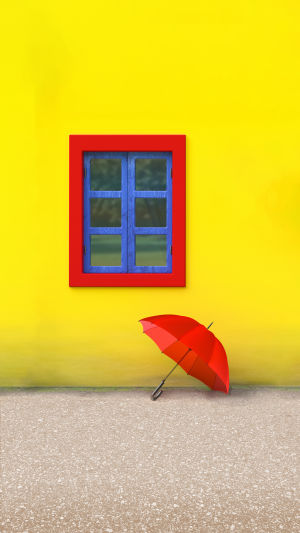Europe is renowned for its rich history, captivating architecture, and stunning landscapes. But amidst the grand cathedrals and ancient castles, a surprising trend emerges – a vibrant explosion of color adorning houses.
From sunny yellows to playful pinks, these colorful facades add a touch of whimsy to European towns and cities. But why are there so many colorful houses in Europe?
There's no single answer, but a fascinating blend of history, practicality, and local tradition has contributed to this vibrant phenomenon. Let's delve into some of the reasons behind these rainbow-hued streets:
<b>1. Sun and Light:</b> In some southern European countries, bright colors like white, yellow, and ochre reflect sunlight, keeping homes cooler during hot summers. This is particularly evident in the Greek islands, where whitewashed houses dominate the landscape.
<b>2. Fishing Folklore:</b> Legend has it that fishermen in some coastal towns painted their houses bright colors to be easily spotted at sea, especially during foggy weather. While the practical application might be debated today, the colorful tradition continues in places like Burano Island near Venice, Italy.
<b>3. Local Pride and Uniqueness:</b> In many towns, painting houses in distinct colors fostered a sense of community identity. Each shade became associated with a particular family or neighborhood, adding a layer of local history to the streetscape.
<b>4. Artistic Expression:</b> Over time, the use of color in houses evolved into a form of artistic expression. Municipalities or homeowners might choose specific color palettes to create a visually cohesive and aesthetically pleasing streetscape. This is evident in the pastel-hued houses of Cinque Terre in Italy.
<h3>3 Must-See Cities for Colorful Houses in Europe</h3>
Now that you know why Europe boasts so many colorful houses, let's explore three stunning destinations to experience this phenomenon firsthand:
<b>1. Burano, Italy</b>: Nicknamed "the island of colors," Burano is a short boat trip away from Venice. Rows of houses painted in vibrant shades of pink, turquoise, green, and orange line the canals, creating a picture-perfect scene. Legend suggests fishermen painted their houses for better visibility, but today, the tradition reflects a love of color and a commitment to local heritage.
<b>2. Nyhavn, Copenhagen, Denmark</b>: This 17th-century waterfront district in Copenhagen is a visual feast. Narrow, colorful houses lining the canal create a charming and historic atmosphere. Originally built for wealthy merchants and nobility, the brightly painted facades of Nyhavn are now a major tourist attraction and a popular spot for enjoying a meal with a view.
<b>3. Cinque Terre, Italy</b>: Cinque Terre, meaning "Five Lands", is a string of five picturesque villages clinging to the cliffs along the Italian Riviera. Manarola, Riomaggiore, Corniglia, Vernazza, and Monterosso al Mare are all known for their brightly colored houses, which cascade down the hillsides towards the sparkling Mediterranean Sea. The vibrant hues add to the dramatic beauty of the coastline, making Cinque Terre a photographer's paradise.
While these three cities offer a stunning glimpse into Europe's colorful houses, many more hidden gems are waiting to be discovered. From the pastel-colored houses of Bergen, Norway, to the vibrant facades of Prague's Mala Strana district, Europe is a treasure trove of colorful streetscapes. So, pack your walking shoes, embrace your sense of wonder, and get ready to be charmed by the rainbow hues adorning European towns and cities.





